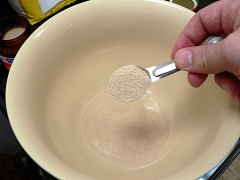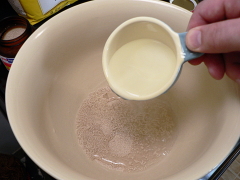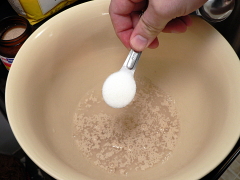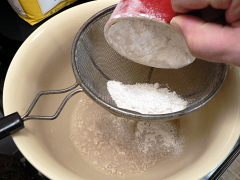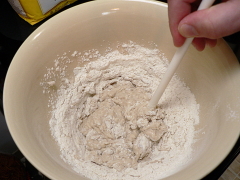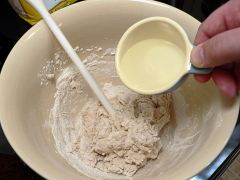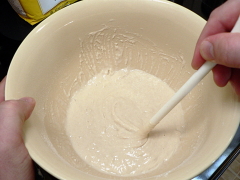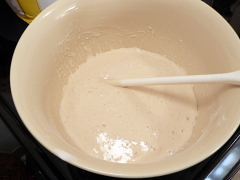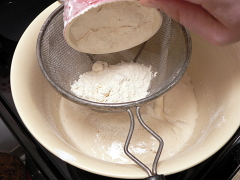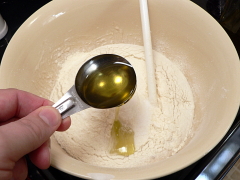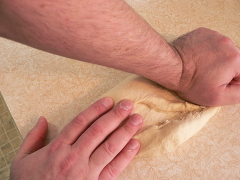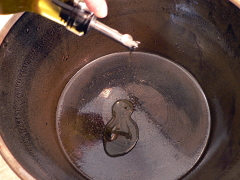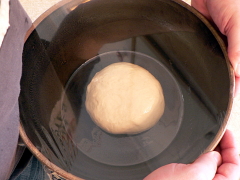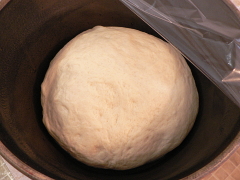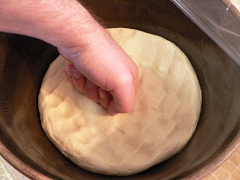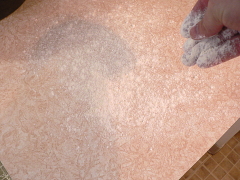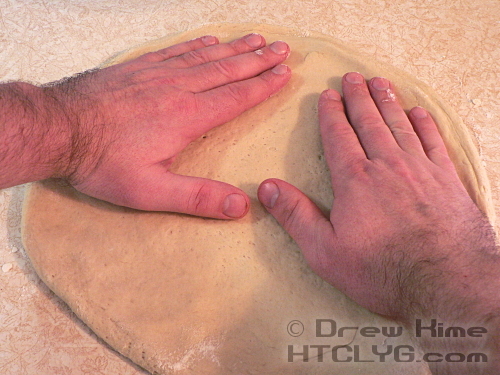The last time I made pizza crust I said I’d have to try again with bread flour. The higher gluten content is supposed to make dough more stretchy and chewy, both good things when you’re trying to stretch out a pizza crust without tearing it.
Well, I got the bread flour, and it’s true. It makes a huge difference. Check out the comparison photos at the bottom if you don’t believe me.
Ingredients
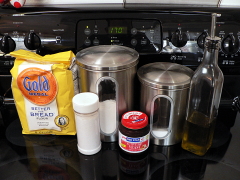
1 cup each white flour and (high gluten) bread flour, sifted
2 teaspoons active dry yeast (one package)
2 teaspoons sugar or honey
¾ cup warm water (105° – 115°)
2 teaspoons salt
2 tablespoons extra virgin olive oil
Directions
Most yeast dough starts out the same way, proofing the yeast. Combine the yeast, warm water to activate it, sugar to feed it, and half the flour so you can see for sure when it’s working.
I added half the water before sifting in the white flour, and the other half after, just in case the water was too hot. You don’t want to kill the yeast. Then stir it and let it sit for 10-15 minutes.
These next two photos are taken 17 minutes apart, and no new ingredients have been added. The extra volume you see is entirely from the yeast consuming the sugar and giving off gas, causing the flour mixture to rise.
Once the yeast is going strong, sift in the rest of the flour, and add the salt and olive oil. Mix everything together. You want it wet enough to pick up all the flour, but not so wet that it’s sticky or slippery.
Turn the dough out onto a floured surface and knead for 10 minutes, until it is smooth and satiny.
Put a few tablespoons of olive oil in a bowl, add the dough, and roll it around to make sure all surfaces are oiled. This is so a skin doesn’t form on the dough, which would keep it from rising. Cover the bowl with plastic wrap or a wet towel. More insurance against drying out.
Leave the bowl in a warm place until the dough has risen to double its original volume, about an hour to an hour-and-a-half. Then punch it down to deflate it most of the way.
Flour your work surface again, and turn the dough out. Press it out into a circle with your fingertips and flour the top of the dough.
Using the edges of your hands, spread the dough out into a circle about 16-18 inches across. This part is easier to show than to describe, so here’s the video I shot last time showing how to spread the dough out without being an expert pizza tosser. (If you can’t see the video in email, view this post at the blog.)
Remember up top when I said the high gluten bread flour makes a huge difference? Here’s the crust I made last time.
And here’s the one with the bread flour.
I’ll be getting myself a large sack of this stuff next time I make a trip to my supplier.
What are your secrets to a perfect pizza crust? Let me know in the comments below.
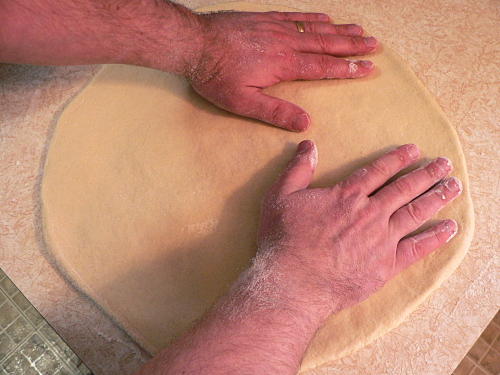
Ingredients
- 1 cup each white flour and (high gluten) bread flour, sifted
- 2 teaspoons active dry yeast (one package)
- 2 teaspoons sugar or honey
- ¾ cup warm water (105° - 115°)
- 2 teaspoons salt
- 2 tablespoons extra virgin olive oil
Instructions
Combine the yeast, sugar, half the flour and the warm water. Allow to rest for 5-10 minutes until the yeast is activated and bubbling.
Stir in the rest of the flour, and the salt and olive oil. The dough should be wet enough to pick up all the flour, but not so much that it's sticky or slippery. Add flour or water one tablespoon at a time as needed to get the right consistency.
Turn out onto a floured surface and knead for 10 minutes until smooth and satiny. In a clean bowl, roll the dough in a couple of tablespoons of olive oil to coat the surface. Cover the bowl with plastic wrap or a wet tea towel and place in a warm place until doubled in size.
Punch down and stretch into a circle about 12-16 inches across, depending on how thick you want your crust.
